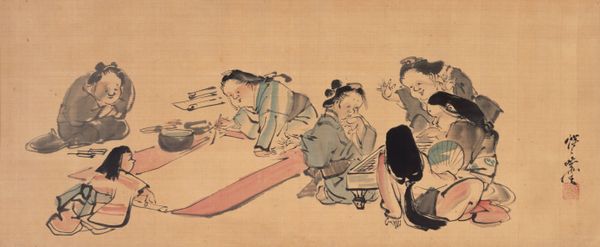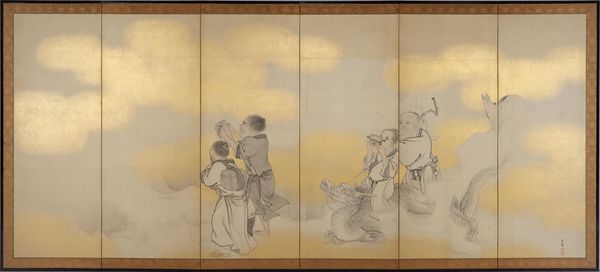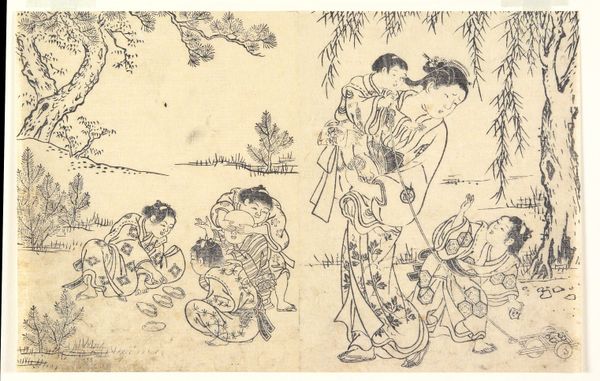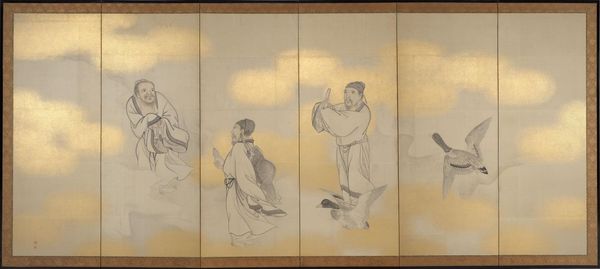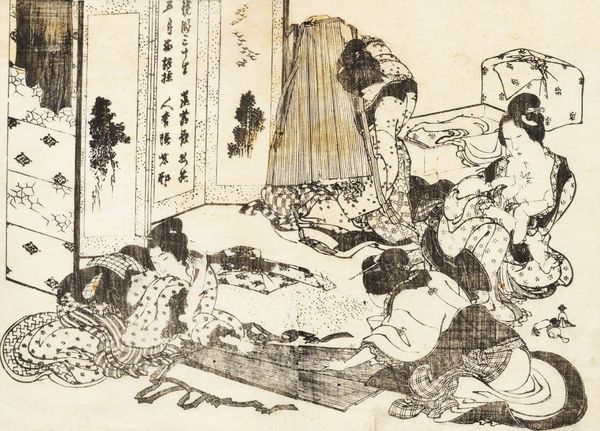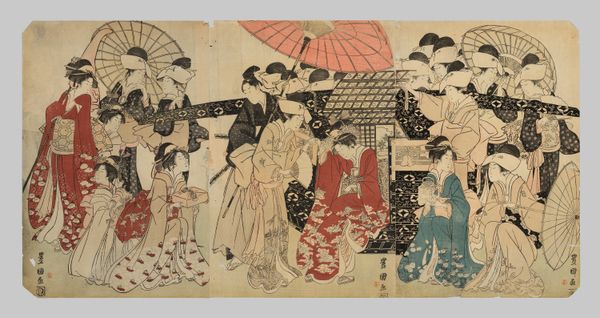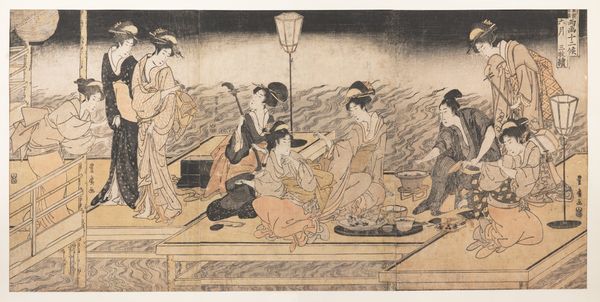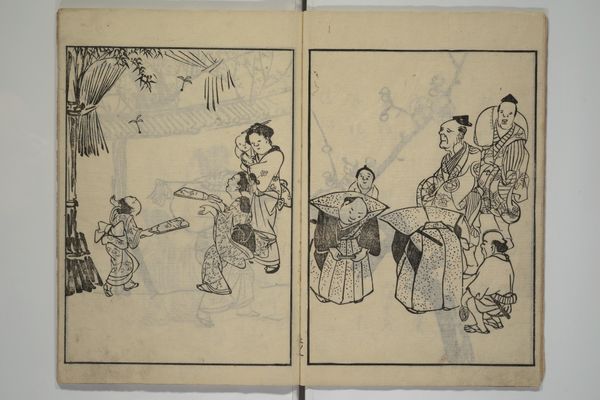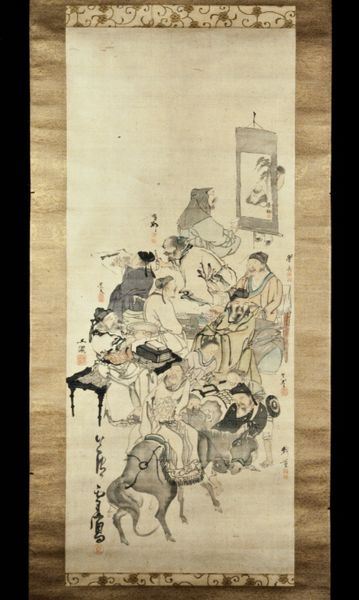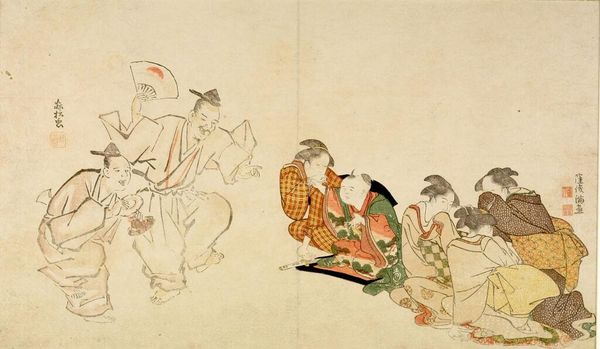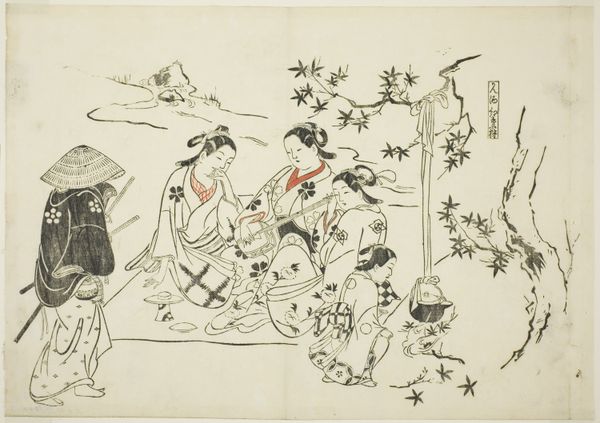![Chinese Children Playing with an Elephant [right of a pair] by Nagasawa Rosetsu](/_next/image?url=https%3A%2F%2Fd2w8kbdekdi1gv.cloudfront.net%2FeyJidWNrZXQiOiAiYXJ0ZXJhLWltYWdlcy1idWNrZXQiLCAia2V5IjogImFydHdvcmtzL2M1N2EyODU5LWY2YjctNDg2Yi05YTlkLWY5MjFjMDcwZmQzZC9jNTdhMjg1OS1mNmI3LTQ4NmItOWE5ZC1mOTIxYzA3MGZkM2RfZnVsbC5qcGciLCAiZWRpdHMiOiB7InJlc2l6ZSI6IHsid2lkdGgiOiAxOTIwLCAiaGVpZ2h0IjogMTkyMCwgImZpdCI6ICJpbnNpZGUifX19&w=3840&q=75)
Chinese Children Playing with an Elephant [right of a pair] late 18th-mid 19th century
0:00
0:00
drawing, ink
#
drawing
#
narrative-art
#
ink painting
#
asian-art
#
ukiyo-e
#
figuration
#
ink
#
coloured pencil
#
genre-painting
#
miniature
Dimensions: 66 1/4 × 141 in. (168.28 × 358.14 cm) (image)67 3/4 × 142 1/2 in. (172.09 × 361.95 cm) (outer frame)
Copyright: Public Domain
Nagasawa Rosetsu made this ink on paper artwork, Chinese Children Playing with an Elephant, sometime in the late 18th century. Rosetsu was a member of the Maruyama school of Japanese painting, a movement that embraced realism and integrated elements of Western art. This six-panel screen depicts a group of children engaged in playful interaction with an elephant. Rosetsu's choice of subject matter may reflect the growing interest in exotic animals and foreign cultures during the Edo period in Japan. Elephants, though rare, were occasionally brought to Japan as gifts from other countries, becoming objects of public curiosity. The painting also presents an intriguing commentary on social structures. The children, seemingly from various social classes, are united in their fascination with the animal. The elephant becomes a symbol of foreignness, around which the artist subtly comments on Japanese society. To fully appreciate this work, we can consult historical records, travelogues, and studies of Edo-period Japanese culture, which provide valuable context for understanding the painting's social and institutional significance.
Comments
minneapolisinstituteofart almost 2 years ago
⋮
Japanese artists, catering to the sentimental tastes of their customers, routinely depicted groups of children at play. Rosetsu brought new vitality to this stock subject by showing the youngsters doing unusual activities. Here, in the right screen, several Chinese children explore the enormous proportions of a gentle white elephant, which seems to smile, tickled by the tiny feet on its great, lumpy back. In the left screen, the youngsters participate in a game of "child snatching" whereby a "catcher" (at the extreme right) tries to grab a child who is protected by a "parent," who stands at the head of the long, winding line with outstretched arms. Rosetsu's exuberant style and daring compositions surpassed the conservative images of his contemporaries. The impetuous energy with which he painted the robes of the children suggests their frantic movements. And yet, Rosetsu also carefully individualized each child, describing a variety of facial expressions and hairstyles.
Join the conversation
Join millions of artists and users on Artera today and experience the ultimate creative platform.
